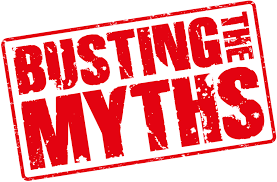MYTH #2: Technology is a commodity and will ‘just work,’ focus on other business areas.
THE FACT: The complexity of an exchange’s technology is daunting and technology must function well or all other business functions degrade to unmanageable manual processes. Allow me to decompose the technology enabling an exchange that drives complexity.
Web Tier
Beginning at the web tier the exchange must confirm that a customer is who they say they are (identity management) and is authorized to perform the function they are requesting (access management).
Application Tier
After identity and access is validated there are two primary paths from which to submit an application, first is through the Customer Portal. This is what is conventionally thought of as the website. A customer goes to their state exchange website and logs in to submit their application. This is consider the Customer Portal and follows the Single Streamlined Application standard provided by CMS. The second option is the Worker Portal. This is how a consumer calling the call center or submitting a paper application would have their application processed.
The processing of the consumer through the Customer Portal or Worker Portal results in eligibility determinations for QHP, APTC, CSR, MAGI Medicaid and Children’s Health Insurance Program (CHIP). This determination is dependent on a master person index (to ensure we don’t create multiple applications for a single person or household). Once we have a unique individual or household we use enterprise services to validate information including income, citizenship, minimal essential coverage and several other validations using a service registry which leverages enterprise services for communicate to the Federal Data Services Hub (FDSH). Now that we have confirmed for example a customer’s income we can provide a successful eligibility determination e.g. they are qualified for health benefits. The exchange communicates this information to payers (the Anthems and Aetna of the world) using electronic data interchange (EDI). This process is complex and includes batches to ensure all application changes processed during the day are accurately captured and sent to carriers and CMS. During this time periodic data checks are conducted with other state agencies prior to sending the completed application information to a carrier. This process in turn triggers notices to the consumer and notices for additional information if the exchange couldn’t validate their information e.g. income real-time through the FDSH.
What if the technology doesn’t work? What if the income doesn’t come back, is that a big deal? For the consumer if the income service does not work and the consumer’s income can’t be validated, they must snail mail a verification document to confirm income e.g. a w2 or a tax return. After the verification is mailed it must be scanned at an exchange processing center, taking additional time. After this information is scanned a worker needs to physically enter this information into the Worker Portal-this is all manual. If this manual burden shifts even 10% the workload and additional staff to support this additional work of entering in paper applications is excessive and a backlog occurs. The affect is workers are overworked and most importantly the customer is not fully complete with the application process until all verification documentation are processed. Let us hope the technology works!
Data Tier
This last tier is the data tier which encompasses the transactional production database supporting all exchange applications in-flight, determinations and changes. Hanging off this core database is a data warehouse for reporting. This enables transactional reports to be generated without impacting production database performance. In short, if an inefficient report is run in production this could slow the website response time for a customer submitting an application or making a change to their address. Also, included in this tier is enterprise content management and document workflows. When applications are mailed in, or uploaded via a mobile application this content needs a place to live so it can be retrieved, this is where documentation management plays a role.
What if everything else works but content management has an issue? We could just do this manually right? No. The challenge is the worker needs the verification document e.g. a w2 to be able to complete the process for the customer. If this document is not accessible how is this done? How is this auditable? The answer is technology is required for the operational process to be completed.
Technology again becomes the backbone of the exchange.
(Look for Part 3 of this post, later this week)
